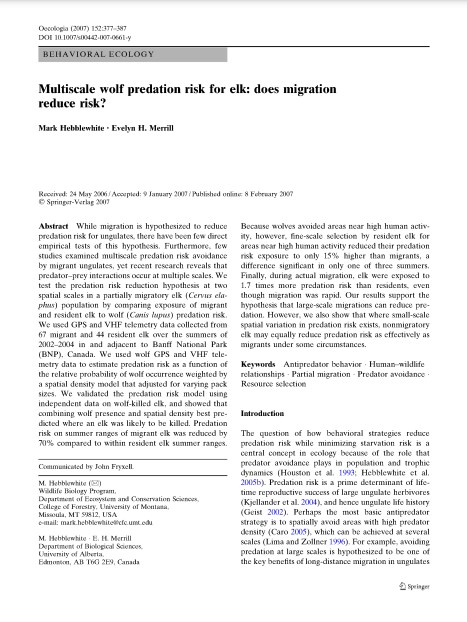Multiscale wolf predation risk for elk: Does migration reduce risk?
Bosque Modelo:
Foothills
Temática:
Economía sostenible
Tipo de documento:
Artículo científico
Resumen
While migration is hypothesized to reduce predation risk for ungulates, there have been few direct empirical tests of this hypothesis. Furtherm ore, few studies examined multiscale predation risk avoidance by migrant ungulates, yet recent research reveals that predator-prey interactions occur at multiple scales. We test the predation risk reduction hypothesis at two spatial scales in a partially migratory elk (Cervus elaphus) population by comparing exposure of migrant and resident elk to wolf (Canis lupus) predation risk. We used GPS and V H P telemetry data collected from 67 migrant and 44 resident elk over the summers of 2002-2004 in and adjacent to Banff National Park (BNP), Canada. We used wolf GPS and V H F telemetry data to estimate predation risk as a function of the relative probability of wolf occurrence weighted by a spatial density model that adjusted for varying pack sizes. We validated the predation risk model using independent data on wolf-killed elk, and showed that combining wolf presence and spatial density best predicted where an elk was likely to be killed. Predation risk on summer ranges of migrant elk was reduced by 70% compared to within resident elk summer ranges.
Información Bibliográfica
Autor:
Hebblewhite, M and EH Merrill.
Revista:
Oecologia
Año:
2007
N°:
-
País :
Canadá
Páginas:
377 - 387
Volumen:
152
Idioma:
Ingles
Palabras claves
A ntipredator behavior, Human-wildlife relationships, Partial migration, Predator avoidance, Resource selection





